Identification
The Cape Weaver is a medium-sized, brightly coloured bird. Males and females look similar but are not quite alike. Males also differ slightly in and out of the breeding season.
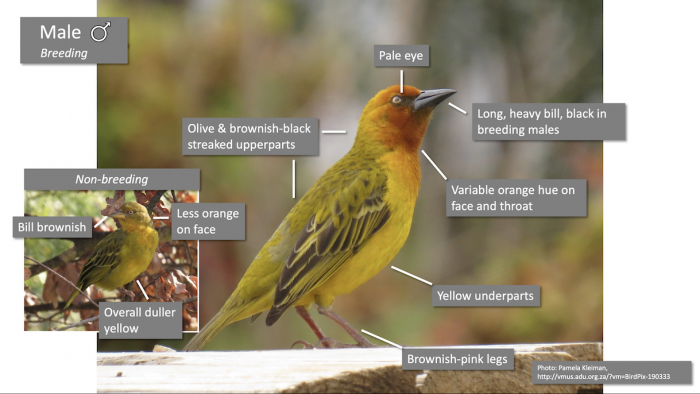
Inset photo: 7 May 2021. BirdPix 168226
Breeding males have olive green upperparts streaked with dark brown. The eyes are a pale whiteish colour and the long, thick bill is black. The underparts are brilliant yellow, and many males have a patch of deep orange around their face and throats. Outside of the breeding season, adult males keep the pale eyes, but lose the bright colours. Non-breeding males are duller yellow overall, and the dramatic black breeding bill becomes a brownish colour.
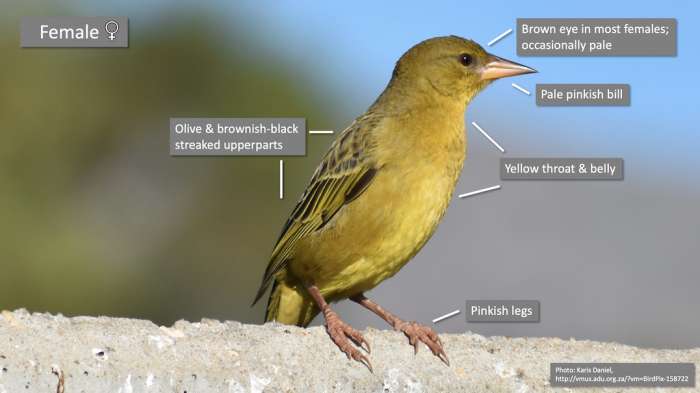
Adult females almost resemble non-breeding males; the upperparts are dull yellowish-green streaked with dark brown, and the underparts are yellow. Females have pinkish-brown bills, and though most have dark brown eyes, around 20% may also have pale eyes! This can make it difficult to tell males and females apart on sight (more here). Juvenile Cape Weavers closely resemble females.
Cape Weavers produce a buzzy, chattery song and a distinct harsh alarm call. Males are particularly vocal around their nests—keep reading to learn more.
Habitat
Cape Weavers have quite a varied diet, and are known to regularly feed on insects, spiders, fruit, nectar, and seeds. They forage in trees and on the ground, and are an important pollinator for many species of aloe.

So long as some tree cover and permanent water are present, Cape Weavers can be found in a variety of open landscapes, often with shrubby vegetation or near farmland.

12 September 2021. BirdPix 184037; Les Underhill, Melkbosstrand, Western Cape. 2 August 2020. BirdPix 123181; Robertson, Western Cape. 23 July 2021. BirdPix 176264; Bitterfontein, Western Cape. 22 July 2020. BirdPix 121140
They are also frequent visitors to garden seed feeders, and will readily utilise bird baths.
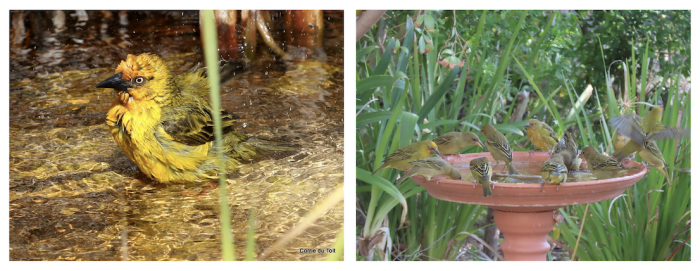
Distribution
The Cape Weaver is an endemic species; its range is confined to South Africa, eSwatini, and Lesotho. It is common in Lesotho and South Africa, except for the dry interior regions of the Northern Cape, and can also be found in western eSwatini.
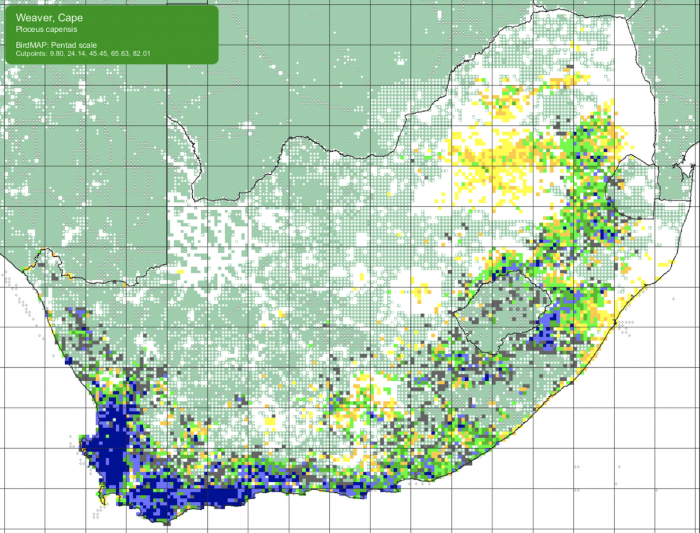
Behaviour
Cape Weavers are gregarious, and are often seen in mixed flocks with other species. They typically sleep in large communal roosts in reedbeds, which may also contain other species. The flock leaves the reedbed early in the morning to forage and returns just after sunset.
Cape Weavers are typically colonial nesters, meaning that several birds nest close together. Birds in the weaver family have some of the most fascinating nesting strategies and structures of any birds in the world. Males weave their bulky, globular nests from broad grasses, reed blades, and occasionally leaves. Cape Weavers are also polygynous, meaning that one male may have several female mates in a single breeding season. Each male constructs a few nests in his territory, which he fiercely defends.
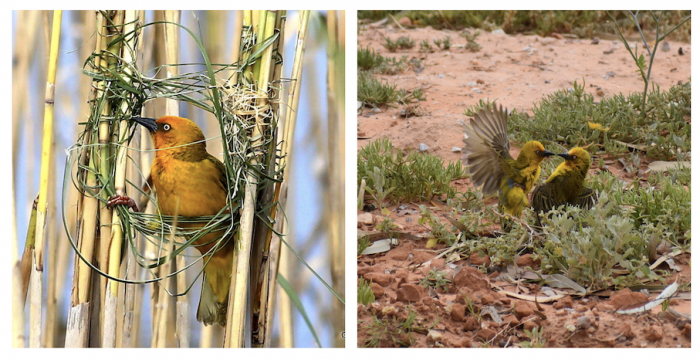
Male Cape Weavers in a territorial dispute. Karis Daniel, Lambert’s Bay, Western Cape. 20 September 2020. BirdPix 132078
Nests are visited and thoroughly inspected by females. If a female is impressed with the quality of a nest, she will line it with grass and soft feathers. You can watch a male constructing his nest in the video below.
Males will usually break down nests that are not selected by females. Nests are built in a variety of locations, and are commonly seen hanging from tree branches, suspended between reeds, or dangling from man-made structures such as fences or buildings.

Further resources
Species text in the first bird atlas (1997)
Birds4Africa: Weaver News
Virtual Museum (BirdPix > Search VM > By Scientific or Common Name)
More common names: Kaapse Wewer (Afrikaans); Tisserin du Cap (French); Kapweber (German); Tessitore del Capo (Italian) Tejedor de El Cabo (Spanish)
List of bird species in this format is available here.
Recommended citation format: Daniel KA 2021. Cape Weaver Ploceus capensis. Biodiversity and Development Institute. Available online at https://thebdi.org/2021/11/8/cape-weaver-ploceus-capensis/

